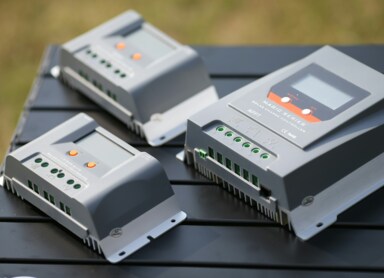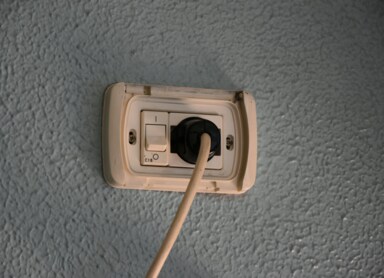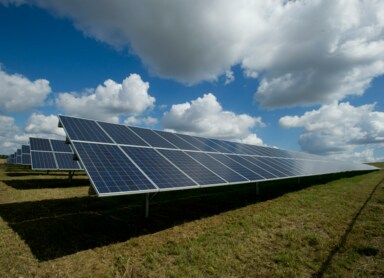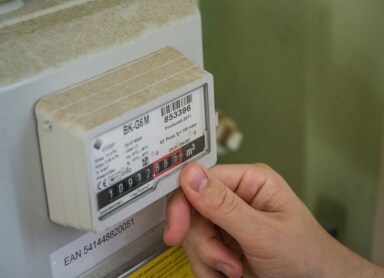Solar Energy – how does It work and why Is it worth investing in?
Solar energy is one of the fastest-growing areas of renewable energy. It is inexpensive, maintenance-free, and at the same time generates real profits while requiring relatively small financial outlays. Its importance for businesses, as well as for individual consumers, is steadily increasing, as the numbers clearly show. In 2023, the total global capacity of photovoltaic installations exceeded 1,400 GW. Read on to find out why investing in solar energy is worthwhile!
Solar energy – what it is and how it works
Solar energy is a branch of industry focused on harnessing the energy generated by solar radiation. The Sun is the largest—and most universally available—source of energy for the entire Earth. It produces enormous amounts of energy, transforming 657 million tons of hydrogen into 653 million tons of helium in just one second. The visible difference of 4 million tons of matter is the energy emitted into outer space. The power emitted by the Sun is distributed across the Earth’s surface with varying intensity. In Poland, this value is about 1100 kWh per square meter per year.
Currently, solar energy is utilized in several different ways, including:
- photovoltaic (PV) cells used to produce electricity,
- solar thermal power plants,
- heat pumps and solar collectors used for thermal energy production.
Each of these technologies can be implemented in businesses to reduce operating costs. Today’s level of technological development means that many renewable energy (RES) investments pay for themselves within just a few years, making them worthwhile despite relatively high upfront costs.
Solar energy in Poland – current status and development prospects
According to Poland’s Ministry of Climate and Environment, solar energy will play an increasingly important role in the country’s energy mix over time. By 2030, the share of solar energy in the national energy supply is expected to reach 30%. Data from the Energy Regulatory Office (URE) show that, as of December 31, 2023, the total capacity of installed photovoltaic micro-installations was 11.3 GW, spread across nearly 1.5 million prosumer and other installations.
In terms of PV infrastructure growth, the leading regions were:
- Silesian Voivodeship,
- Lesser Poland Voivodeship,
- Lower Silesian Voivodeship.
By June 30, 2024, there were 5,071 registered small renewable energy installations (MIOZE), with a total installed capacity of 4 GW. Large-scale solar farms are also rapidly developing in Poland. The energy they produce is sold to local governments and large manufacturing companies, often through power purchase agreements (PPAs) for green energy. If you are not yet planning to install your own PV system, signing a PPA for renewable energy is an excellent solution, combining business benefits with ESG compliance.
Global development of solar energy – trends and innovations
Polish solar energy trends closely reflect global renewable energy tendencies. According to the 2024 report by the International Renewable Energy Agency (IRENA), the total installed solar energy capacity in 2023 reached 1,418 GW, while electricity generation from solar panels increased by 25.6% year on year.
It is no surprise that China leads the world in solar electricity production, generating more than three times as much as the second-place United States. India, Japan, and Germany also rank among the top producers.
IRENA forecasts that by 2050, solar power will become the world’s second most important energy source. However, this requires ongoing legislative changes to support innovation among producers, as well as bold decisions by prosumers and other renewable energy users.
Advantages of solar energy – why invest in it?
There are many reasons why solar power is gaining popularity. Most importantly, renewable energy ensures energy independence and low operating costs. Financial savings from lower electricity and heating bills allow businesses to grow faster, as surplus capital can be reinvested elsewhere. Solar installations also provide energy security, since this source will not run out in the foreseeable future and is completely independent of geopolitics, raw material supply, or international agreements.
Because solar energy systems are based largely on semiconductors, they are nearly maintenance-free. They require only periodic cleaning and technical inspections, without the need for constant part replacement or expensive, hard-to-get components. Moreover, PV panels have a lifespan of 20–25 years, meaning that once purchased, they secure a company’s energy transformation for decades.
Does solar energy have drawbacks?
Although solar power is an extremely efficient and cost-effective way of generating electricity, it does come with certain limitations:
- Daily and seasonal variability – electricity production fluctuates depending on the time of day and year,
- Low energy density – solar radiation is less energy-dense compared to some other energy sources,
- Energy storage – requires specialized storage systems to ensure continuous supply.
- Fortunately, these challenges can be addressed with proper planning and optimization of the investment.
Solar energy and environmental protection – impact on ecology
In addition to business benefits, solar power also contributes to biodiversity preservation and environmental protection. Solar installations are zero-emission, meaning their operation does not generate harmful pollutants. Ground-mounted PV systems or heat pumps also require minimal earthworks, which are shallow, small, and do not disrupt ecosystems.
It is estimated that solar energy grows by around 40% annually, and this pace is expected to accelerate in the coming years. If you want to drive your company’s green transformation, adopting solar or other renewable energy solutions is the right direction. These technologies combine efficiency, climate neutrality, stability, and long-term reliability. At the same time, thanks to recent legislative changes, installing solar panels or heat pumps has become simpler and more profitable, with the possibility of receiving substantial subsidies.






